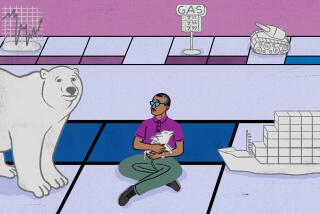Commodity prices were hit hard in second half of year
Commodity investors got a refresher course in risk last year.
Raw-material prices surged early in 2011, with several notching all-time highs as the global economy appeared to be rebounding strongly from the depths of the 2008 financial crisis.
But prices reversed course in the second half of 2011. Precious metals, oil and other commodities fell sharply amid deepening fears of recession in Europe, slowing growth in China and extended economic weakness in the United States.
After peaking in late April, a widely followed index of 19 commodity prices slid steadily the rest of the year and ended 2011 down 8.1% — only its third annual decline in the last decade.
Copper and natural gas each suffered double-digit losses. Gold finished 10% higher — outpacing the stock market and most other raw materials — but the precious metal was far off a mid-August peak when it briefly looked capable of piercing $2,000 an ounce.
“It was a rough year,” said Frank Cholly, a senior commodities broker at RJO Futures in Chicago. “We went through a lot of ups and downs in 2011, with uncertainty about whether or not the economy was expanding or contracting.”
The average commodities mutual fund fell 8.1% last year, after rising 16% in 2010 and 23% in 2009, according to Morningstar Inc. The largest fund in the sector, the $22-billion Pimco Commodity RealReturn Strategy fund, slipped 7.6%.
Many analysts expect emerging-market demand to drive commodities prices higher in coming years.
But as 2011 showed, long-term promise won’t insulate the notoriously volatile futures markets from short-term fluctuations.
Among exchange-traded funds, the average precious-metals fund declined 4.6% last year. Industrial-metals funds fell 23.4%, agriculture ETFs slipped 11.7% and energy offerings slid 7.1%, according to Morningstar.
The $63.5-billion SPDR Gold Shares fund rose 11.2%. But some other metals funds fell hard.
The iShares Silver Trust lost 8.5% and the PowerShares DB Base Metals fund skidded 23.2%.
After huge advances in 2010, agriculture funds forfeited up to half those gains in 2011.
The $2-billion PowerShares DB Agriculture fund lost 11%.
Investors remain skeptical that European lawmakers will be able to overcome their sovereign-debt problems, raising the risk of the continent’s debt crisis triggering a global downturn that reduces demand for such commodities as aluminum and crude oil.
Also important, experts say, is the extent of economic cooling in fast-growing emerging markets, which have been a key source of demand for raw materials.
China is trying to throttle back its economy to tamp down its frenzied housing market and rein in inflationary pressures.
A lot “depends critically upon what happens in Europe and China,” said Nicholas Johnson, co-manager of the Pimco Commodity RealReturn fund.
A weakening global economy could push the raw-materials market lower, but signs of improvement could lead to “broad strength in the commodity sector,” Johnson said.
One of the few bright spots in the commodity sector was gold.
Prices surged through late summer, but then began tumbling alongside the global stock market.
Gold rose 10% for the year, closing at $1,565.80. But that was down 17% from its peak of nearly $1,900 in August.
The selling was driven partly by hedge funds unloading profitable investments to raise cash.
Bulls don’t expect the dramatic rally in gold to resume, but they predict additional gains this year.
Investors will continue to favor gold as a haven amid economic uncertainty in the U.S. and Europe, they say, especially because of rising skepticism about the value of paper currencies as central banks dramatically boost the money supply to spur economic growth.
The precious metal also will benefit, they say, from its traditional role as a hedge against inflation, which they fear could result from the loosening of monetary policies.
Finally, they say, investors will be inclined to hold gold as long as interest rates remain subdued.
Rates on alternative investments such as bonds are so low that investors won’t be tempted to flee to other asset classes, they say.
“I don’t believe it’s lost its luster, but I don’t believe it’s going to go back to $2,000,” Cholly said. “The upside in gold is more limited now than it was $600 ago.”
More to Read
Inside the business of entertainment
The Wide Shot brings you news, analysis and insights on everything from streaming wars to production — and what it all means for the future.
You may occasionally receive promotional content from the Los Angeles Times.










